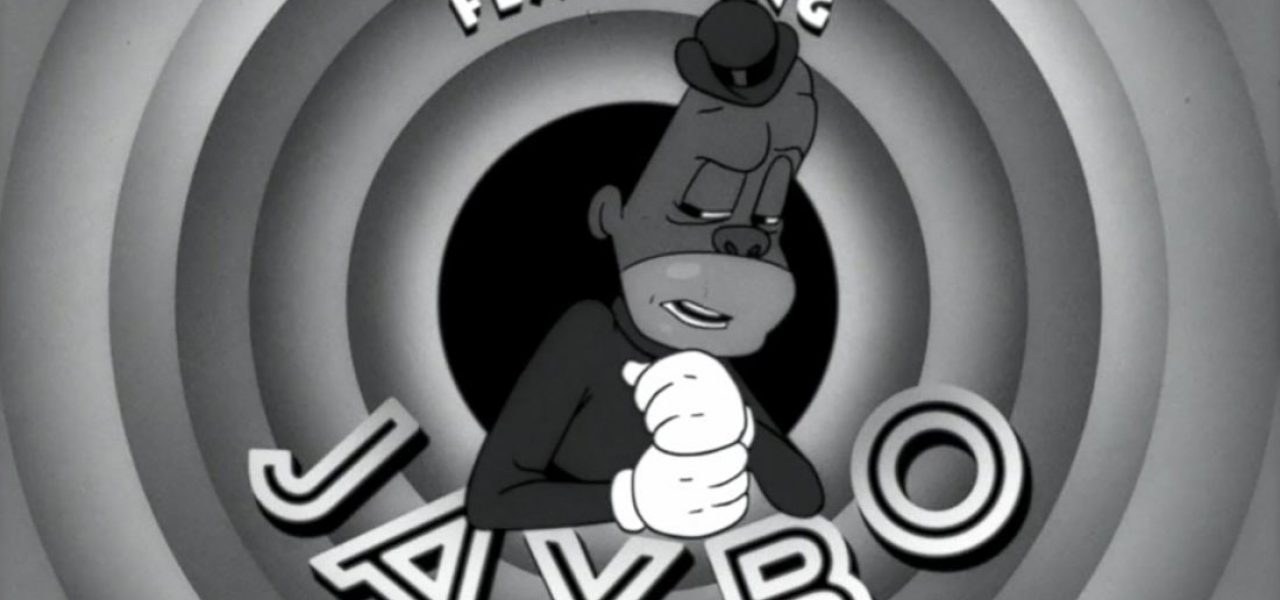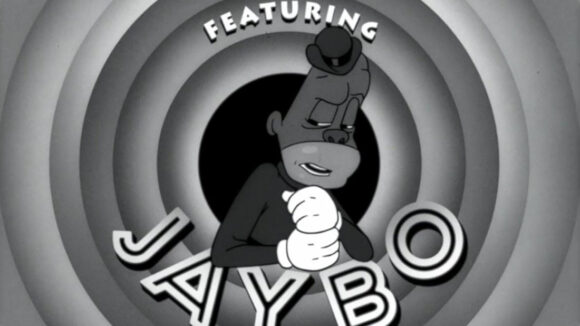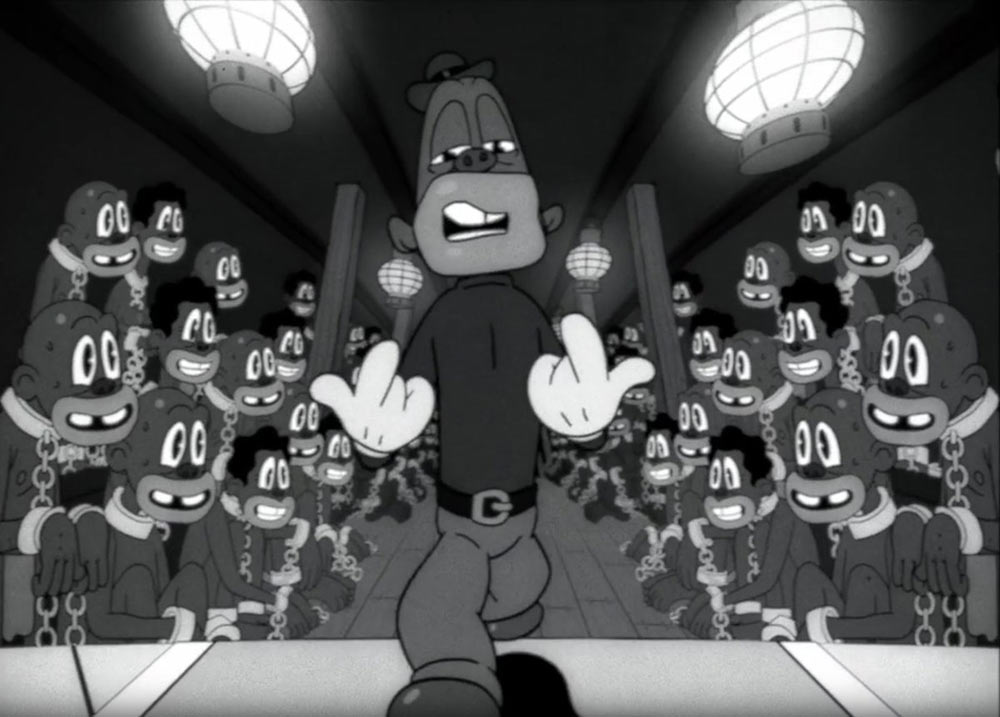

What Are The Cartoons That Jay-Z Is Referencing In His New Video ‘The Story of O.J.’
Jay-Z released his new album 4:44 today, and the album’s first video, “The Story of O.J.,” is a powerful retro-styled animated piece that subverts the racial stereotypes and caricatures of vintage Hollywood theatrical shorts.
The video, co-directed by Mark Romanek and Jay-Z himself, is only available on the music streaming service Tidal, but the opening can be seen below [UPDATE: The entire video can now be seen below in a hi-res version.]:
“‘The Story of OJ’ is really a song about we as a culture, having a plan, how we’re gonna push this forward,” Jay-Z explained in an interview about the song. “We all make money, and then we all lose money, as artists especially. But how, when you have some type of success, to transform that into something bigger.”
Jay-Z chose to illustrate that concept by employing the dated racial iconography of Hollywood animation, and presenting a catalog of white animators’ interpretations of black people and culture from the first half of the twentieth century.

Many of the stock stereotypes of black people in old animated shorts can be found in Jay-Z’s video, from thick-lipped minstrels and cannibal natives to plantation workers, sharecroppers, and Little Black Sambo (based on Helen Bannerman’s children’s book The Story of Little Black Sambo). For the latter, Jay-Z himself assumes the role of Jaybo, a play on Little Black Sambo imagery, and introduces the cartoon by appearing in the iconic circular motif that was used for classic Warner Bros. cartoons.

The short gains poignancy by juxtaposing these stereotypes, which were a holdover from 19th century caricatures, against more sober and realistic scenes of the black experience in the United States, from people in chains aboard slave ships to segregation, lynchings, and the Ku Klux Klan dancing in the background. The video also caricatures real historical figures, from Nina Simone playing the piano to Olympic athletes Tommie Smith and John Carlos giving a Black Power salute at the 1968 Olympics — not to mention a brief appearance by O.J. Simpson.
The video’s impact stems in large part from remaining true to the style of the vintage shorts. While the animation style is somewhat more limited than the cartoons it is referencing, it’s clear that the animators who made this video did their homework and studied cartoons from the first half of the twentieth century. And there was definitely a lot of homework to do.
All of the studios of the period — Disney, Warner Bros., MGM, Iwerks, Lantz, Fleischer, et al. — engaged in the production of cartoons with racial stereotypes, some studios more than others. While the regrettable images appeared in a relatively small portion of the overall output of those studios, they did exist and they helped perpetuate negative attitudes towards black people. Depictions of African-Americans tended to be especially vicious in the works of Warner Bros. and Lantz cartoon studios. One scene in the music video, in which Jaybo eats watermelon, appears to be a direct reference to a shot in the bluntly racist Lantz cartoon Scrub Me Mama with a Boogie Beat (1941):

The black angels with wings and halos also would appear to be a reference to the Warner Bros. short Clean Pastures (1937), but for the most part, “Story of O.J.” avoids these direct references and uses the older cartoons as general inspiration. Below you’ll find a few of the theatrical cartoons by Warner Bros., Disney, and Lantz that likely served as reference for the video. An exhaustive catalog of black imagery in older animation can be found in the book That’s Enough, Folks: Black Images in Animated Cartoons, 1900-1960 by Henry T. Sampson.
The video mixes the racial imagery with more benign references to the distinctive filmmaking vocabulary of New York-based Fleischer studio, whose cartoons often used inventive animated perspectives, like shots that take the viewer into the mouth of a character, and moving backgrounds, like the one below:

Countless homages and parodies of vintage theatrical shorts have been produced in recent years, but “The Story of O.J.” succeeds by adding something fresh to the discussion. Like the photograph of Huey Newton mocking colonialist portraiture (an image that is referenced in the video), Jay-Z reclaims the dated stereotypes of Hollywood animators and repurposes them in a socially conscious context.
The Mill and Titmouse produced the animation for the video. Here are the credits — artists only — for the project:
Design & Animation by The Mill
Creative Director: Lisha Tan
Lead Character Design: Rustam Hasanov
Art Director: Tim Devlin
Title Design: Ilya Abulkhanov
Design: Nathan McKenna, George Fuentes, Ren Chen, Lisha Tan, Amy Graham
Animation: Justin Demetrician, Jason Kang, Kyle Moore, Mikhail Pakhomov, Tim Devlin, Evan Parsons
3D Modeling: Sasha Vinogradova
2D Lead Artist: John Shirley
Storyboard Artist: Vince Wei
Character Animation by Titmouse
Animation Director: Mike Roush
Animation: Matt Augustin, Roberto Rosi, Richard Mather, Thom McDonnell, Daran Carlin-Weber, Jonathan Peartree, George Chung, Adam Temple, Brian Pak, Mike McCraw, Dante Buford, Marius Alecse, Connie Chan
Cleanup: Jan Naylor, Yi Song, Carl Aspuria, Anthony Parrotta
Editorial by Arcade Edit
Editor: Paul Martinez
Assistant Editor: Pete Dandrea






.png)